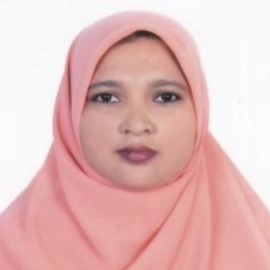
Nargis Parvin
Work place: Department of Computer Science and Engineering, Bangladesh Army International University of Science and Technology (BAIUST), Cumilla, Bangladesh
E-mail: nargis@baiust.edu.bd
Website:
Research Interests:
Biography
Miss. Nargis Parvin received her B.Sc. (Honours) and M.Sc. degrees in Information and Communication Engineering from University of Rajshahi, Rajshahi, Bangladesh, in 2006 and 2007, respectively.
In 2013, she joined as a Lecturer in the Department of Computer Science and Engineering, Bangladesh Army International University of Science and Technology (BAIUST), Cumilla Cantonment, Cumilla, Bangladesh, where she is currently serving as an Assistant Professor. She pursued her Ph.D. degree in the field of speech processing at the Graduate School of Science and Engineering at Saitama University, Japan. Her research interests include speech analysis and digital signal processing. She can be contacted at email: nargis@baiust.edu.bd.
Author Articles
Fundamental Frequency Extraction by Utilizing Accumulated Power Spectrum based Weighted Autocorrelation Function in Noisy Speech
By Nargis Parvin Moinur Rahman Irana Tabassum Ananna Md. Saifur Rahman
DOI: https://doi.org/10.5815/ijitcs.2024.03.05, Pub. Date: 8 Jun. 2024
This research suggests an efficient idea that is better suited for speech processing applications for retrieving the accurate pitch from speech signal in noisy conditions. For this objective, we present a fundamental frequency extraction algorithm and that is tolerant to the non-stationary changes of the amplitude and frequency of the input signal. Moreover, we use an accumulated power spectrum instead of power spectrum, which uses the shorter sub-frames of the input signal to reduce the noise characteristics of the speech signals. To increase the accuracy of the fundamental frequency extraction we have concentrated on maintaining the speech harmonics in their original state and suppressing the noise elements involved in the noisy speech signal. The two stages that make up the suggested fundamental frequency extraction approach are producing the accumulated power spectrum of the speech signal and weighting it with the average magnitude difference function. As per the experiment results, the proposed technique appears to be better in noisy situations than other existing state-of-the-art methods such as Weighted Autocorrelation Function (WAF), PEFAC, and BaNa.
[...] Read more.Other Articles
Subscribe to receive issue release notifications and newsletters from MECS Press journals